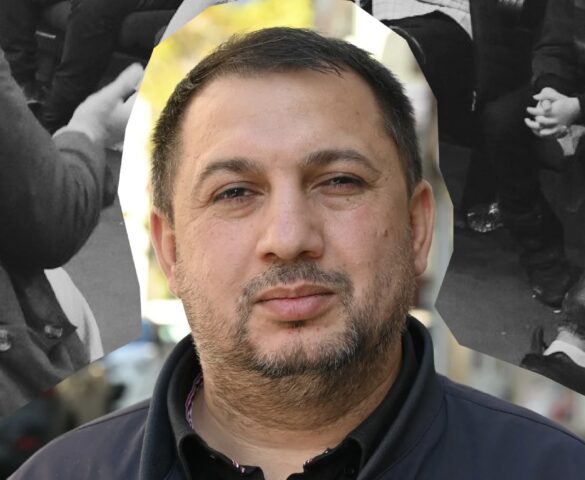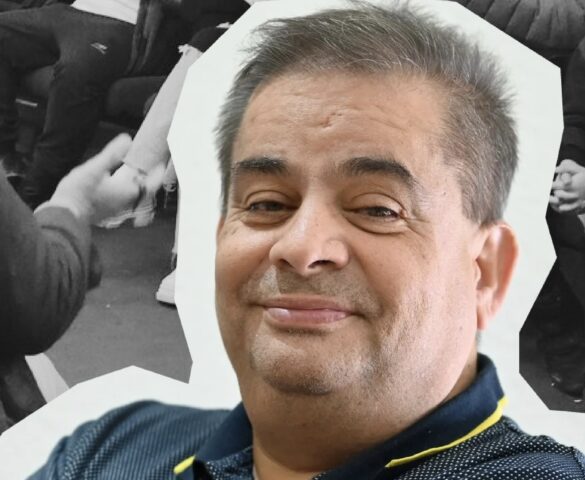“Before the war, there were good living conditions for the Roma in that mahalla, all the Roma were integrated. When I say they were integrated, I mean everyone was working, everyone had their own craft where they worked, there was some kind of order so to speak, where everyone knew what they were doing and where. They were not dependent on social aid, as it is now, they were organized politically, they were employed, and we had activism, political activism as well, Roma had their voice heard, in Kosovo Polje. Many Roma in Kosovo Polje worked for known companies such as the power plant company, the water company, the flower company — a company where before the war, from ‘90 till ‘99, over 500 families worked, now there is no one working there, because the modernization happened and everything went private.”
The stories of Roma people affected by the 1998-99 Kosovo War and its aftermath are largely unknown. We present here the narration of individual lives which highlight the long-term consequences of displacement, social exclusion, and economic hardship for Roma communities. Our aim is to address the historical exclusion of Roma narratives from mainstream accounts of the Kosovo conflict, providing a better understanding of their vulnerable social position but also of their resilience.
This publication was conducted in partnership with the Heinrich Böll Foundation. Views and opinions presented therein are the authors’ own and do not necessarily reflect those of the Heinrich Böll Foundation.
The interviews were conducted in the dialect of Romani language spoken by the speakers [Gurbetski, Arljiski, Burgurgjiski, or Prizrenski], and then translated into English.
About the dialects: The Romani language spoken in Kosovo is rich, diverse, and shaped by centuries of cultural interaction, migration, and local history. Within Kosovo, Romani is not a single uniform language but is instead composed of several distinct dialects that reflect the regional identities of different Roma communities. These dialects share a common linguistic foundation but differ in pronunciation, vocabulary, and influences from surrounding languages such as Albanian, Serbian, and Turkish. Together, they represent an important element of Roma cultural heritage and identity in Kosovo.
One of the most widely spoken varieties is Gurbetski, used particularly by Roma communities in the central and southern parts of Kosovo (Mitrovica, Peja, Fushë Kosova).
Another important variety is Arljiski, spoken by groups with historical roots in the Balkans who migrated over different periods. Arljiski maintains certain older grammatical structures and contains substantial lexical borrowings from Serbian and other South Slavic languages, showing how Roma communities adapted linguistically to their surroundings.
The Burgurgjiski dialect is historically associated with Roma communities who traditionally worked as metalworkers and craftsmen. While today the occupational distinction is less common, the dialect retains unique terminology related to trade and craftsmanship. It also shows a mixture of influences depending on the region where families settled, making it an important marker of group identity and tradition.
Similarly, the Prizrenski dialect reflects the cultural and historical environment of Prizren, one of Kosovo’s most ethnically diverse cities. It incorporates elements of Albanian, Turkish, and Slavic languages, and is well known for its strong oral and musical traditions passed through generations.
These dialects demonstrate the adaptability and resilience of Roma language and culture in Kosovo. While they differ, they also maintain enough grammatical and lexical similarity to remain mutually understandable among Roma communities across the country. Today, with increasing interest in cultural preservation, education, and linguistic documentation, the Roma dialects of Kosovo continue to play an essential role in strengthening identity, community cohesion, and the transmission of linguistic and cultural heritage to younger generations.
Ridvan Gashi
JournalistRamadan Avdi
BlacksmithThere were a lot of those holidays, how to say, we used to celebrate Erdelezi and that for many days, we would go to each other’s house. It was not just to go to eat and drink, but the thing is that we stick with each other… We used to celebrate Vasi, and that as well was celebrated for 2-3 days… My late father would sing the bread, and then we would gather all together, the whole family would, and we had a lot of expenses… My father would sing the bread, and he would sing to everyone that would come, for every male, or kid, from every family, all… And all, because then people used to feel the impact of the singing… And then, let’s say, there were weddings, and then there were diverse festivities.

